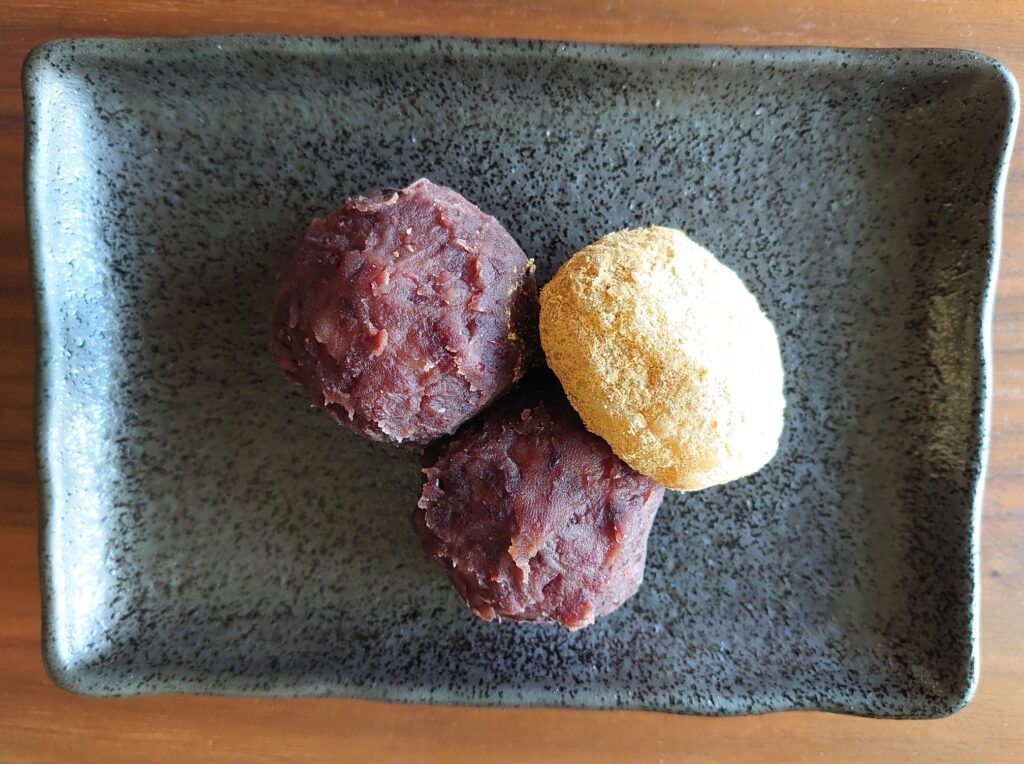The third week of September is always a welcomed time in Japan, as it is marked by two days of holidays: the “respect for the aged day” (Keiro no Hi 敬老の日) and the Autumn Equinox day (Shūbun no Hi 秋分の日). For this reason, this period is also known as Silver week, similar to what happens to the Springs’sequence of festive days, called Golden week.
Today I would like to talk you about the latter of the two holidays: the Autumn Equinox day, or Shūbun no Hi 秋分の日. Besides being a welcome day-off, this holiday deeply connects to Japanese folk culture, religion, and food, so read on!
The modern institution of the Autumn Equinox day as a Japanese public holiday goes back to 1948. Before that year, on the same day was held instead a celebration called Shūki kōreisai 秋季皇霊祭, in which Shinto rituals were practiced to pay respect to past Emperors and members of the imperial family. This former tradition, too, has a known start date, 1871. However, the importance of the Autumn Equinox day in Japanese culture has even deeper roots.
As the day in which daytime and nighttime have (more or less!) the same length, the Autumn Equinox is also the day in which the astronomical summer gives way to the astronomical autumn season in the Northern Hemisphere. This was a cardinal point for agricultural communities, as it announced the harvesting season’s arrival. People prayed for good harvests, so rites were established to ensure that prayers would be heard and harvests be plentiful!
One example of such rites, still practiced today, is the Buddhist celebration of the Aki Higan 秋彼岸, which describes the period of seven days during which the Autumn Equinox falls. Celebrated only by Japanese sects of Buddhism, Aki Higan is connected to the Haru Higan 春彼岸, celebrated in Spring, when the Spring Equinox day falls instead. During both Higan celebrations, special services are held in Japanese Buddhist temples, and people will return to their hometowns to visit and pay respects to their ancestors.
Another custom that the Spring and Autumn Higan celebration share is the tradition of eating a confectionary called Botamochi 牡丹餅, also known as Ohagi お萩 (more on the difference in a minute!), which consists of a ball of glutinous and non-glutinous rice which were cooked and pounded to a chewy consistency together, then coated with sweet azuki 小豆 red bean paste, or also soybean flour (called Kinako 黄粉 in Japanese) or sesame.

This elementary composition doesn’t change between Botamochi and Ohagi; however, there is a difference between the two confectionaries that goes beyond the difference in name. It is a difference rooted in the significance of seasonality in Japanese culinary cuisine.
Botamochi, which is the confectionary eaten in Spring, takes its name from the peony flower (called Botan 牡丹in Japanese) that blooms around the period of the haru higan. The Botamochi is a relatively big, round confection as the luxuriant peony flower to whose name it refers.
Ohagi, which is eaten in Autumn, takes its name instead from the Japanese bush clover, a small violet flower – to resemble it, Ohagi is a smaller, somewhat elongated confection, like the ones in the picture above.
Regardless of the dimensions, Botamochi and Ohagi both share the characteristic of containing Azuki: the red beans from which the sweet paste is made are known in Japanese tradition to repel bad energy and bring good luck, definitely a welcome power to have at one’s side during harvesting season!
Although in our modern society the Autumn Equinox Day might have lost its significance as a milestone event of the Year, it still marks the passing of the Summer season and the entering of the Autumn one. Maybe we could re-introduce some aspects of the old agricultural way of living and take this event as an occasion to take a break and recharge before heading into the new season.
And while I cannot vouch for the lucky charm-like properties of eating Azuki beans, I can guarantee you that Ohagi are delicious sweets, so if you happen to come by some, definitely give them a try!

